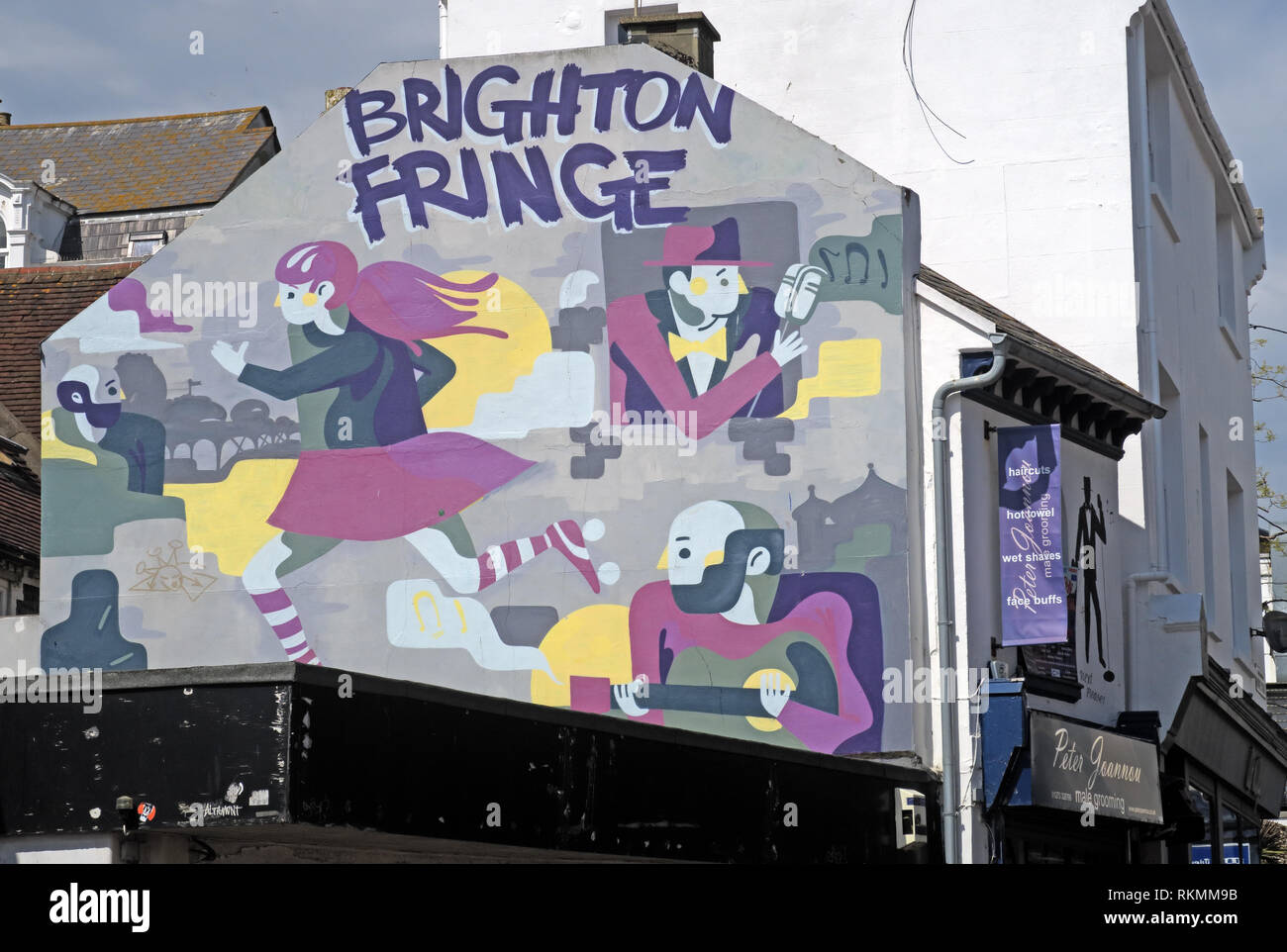Brighton Fringe advert on gable-end of terrace, Brighton city centre, East Sussex, England, UK

Image details
Contributor:
Tony Smith / Alamy Stock PhotoImage ID:
RKMM9BFile size:
53.1 MB (2 MB Compressed download)Releases:
Model - no | Property - noDo I need a release?Dimensions:
5256 x 3528 px | 44.5 x 29.9 cm | 17.5 x 11.8 inches | 300dpiDate taken:
11 May 2017More information:
Brighton Fringe is an open-access arts festival held annually in Brighton, England. It is the largest annual arts festival in England and one of the largest fringe festivals in the world. Brighton Fringe 2018 took place from 4 May – 3 June. The programme of 2018 included 1008 events at over 166 venues across 4 weeks. Brighton Fringe runs at a similar time to Brighton Festival, and in 2013 extended its run to four weeks. In 2019, Brighton Fringe will run from 3 May-2 June. One of the event's main objectives is to promote local talent and the arts. It also offers performers an opportunity for their event to be reviewed or picked up by promoters, as well as going on to Edinburgh. This is why anyone can put on a Brighton Fringe event. In 2011 Brighton Fringe launched the Professional Development Programme, aimed at offering workshops to aspiring performers wanting to progress in the business. In 2012, Brighton Fringe opened its own on-street box office, which provided a physical base for the arts event, selling tickets as well as being a hub for promoters and performers. They also launched "Brighton in the Square", a showcase of Brighton Fringe performers at the Leicester Square Theatre in London. As part of the 2012 Cultural Olympiad, Brighton Fringe introduced the Dip Your Toe project in 2012, which featured performances in six custom-built Victorian bathing machines, which were located throughout Brighton and Hove during the month of May. In 2014, the organisation launched an Arts Council England supported scheme called "Window" which showcases productions suitable for touring. Brighton Fringe is a registered charity but does not rely on public funding, in fact, less than 3% of its income is generated from public sources. The other sources of revenue include participants’ registration fees, advertising, sponsorship and Friends membership.